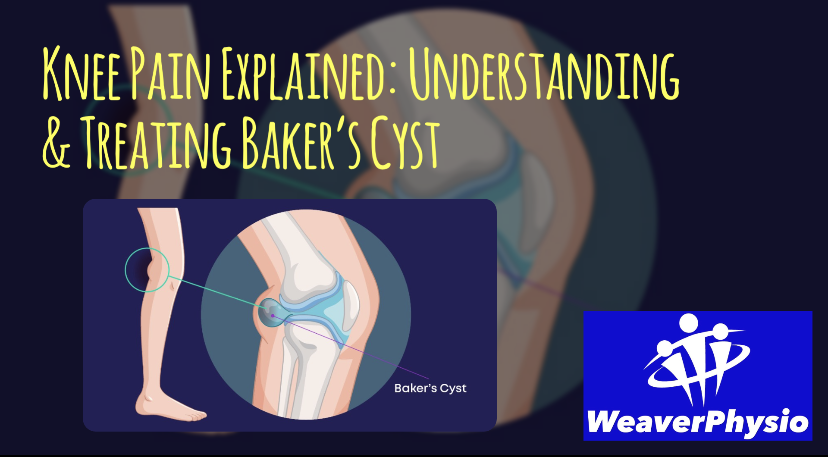Add days to your life and life to your days
March 13, 2020
Keeping active as you get older

Life expectancy is at its all-time high, the fact that so many people are living longer, well into their 80s and 90s is a wonderful ideal. However, the sad reality is that living longer doesn’t always include a good quality of life, it’s not a package deal.
Many people outlive their children and their pensions, and end up feeling like they’ve become a financial, physical and emotional burden on their families. Swallowing handfuls of pills every day, losing independence and requiring nursing care is not the way most people would choose to spend their last years.
However, there are steps you can take to reduce the risk of this outcome. Making a conscious decision to take small steps (literally) from today, could make all the difference in your life going forward.
Physical activity (PA) or exercise, when performed regularly, has been proven to prevent and help manage more than 20 chronic conditions. These include coronary heart disease, stroke, type 2 diabetes, cancer, obesity, mental health problems and musculoskeletal conditions. Sadly, you can’t bank the benefits of exercise from your youth. Ideally being active throughout your lifespan would give optimal health benefits, however research has shown the health gains achieved through PA can be attained at any time. So, it doesn’t matter when you start as long as you start!
Now we’re certainly not saying you have to sign up for an IronMan Ultra-Triathlon or become the next Crossfit Superhuman. Physical activity includes all forms of exercise, such as everyday walking or cycling to get from A to B, active play, work-related activity and active recreation; such as working out in a gym, dancing, gardening or playing active games, as well as organised and competitive sport.
Physical inactivity is the fourth leading risk factor for death. The latest research shows that a sedentary life is as great a risk factor as smoking and obesity, for heart disease risk. Sedentary behaviour is not simply a lack of activity but a cluster of individual behaviours where sitting or lying is the dominant mode of posture, and energy expenditure is very low.
Inactivity was always associated as a cause of being overweight or obese, which in turn results in an increased risk of heart disease and diabetes. However, the most current research has shown that even normal weight individuals that are inactive, are at risk of developing disease.
While you can blame it on your job or school that forces you to sit for hours in a day, you can also mitigate the negative effects with just 60-75 minutes of moderate intensity PA a day.
Regardless of your activity starting point, there are benefits to be gained for anyone who increases their activity levels. Individuals that follow the recommended physical activity guidelines have shown to have optimal health benefits of a 39% reduced risk of dying from any disease. However, anything is better than nothing – even doing half the amount of the recommended weekly activity has shown a 20% lower risk of mortality.
Regular physical activity roughly halves your chance of developing some cancers, like bowel and breast cancer. Studies have shown that people who continued to exercise once diagnosed with cancer had significantly less cancer deaths and any-cause death than those who were inactive.
If you’d like to know more, you can download our Gold Standard Physical Activity Recommendations leaflet, along with additional exercise advice for people suffering from the following conditions, all of which can benefit significantly with regular physical activity.
1. Staying Healthy and Preventing Disease
2. COPD
3. Depression
4. Musculoskeletal Pain
5. Type 2 Diabetes
6. Cancer
7. Dementia
8. Falls and Frailty
9. Inflammatory Arthritis and Osteoarthritis
10. Heart Disease
You can download all the leaflets at the following link http://bit.ly/34Mj0rk

Knee pain is one of the most common musculoskeletal complaints we see at Weaver Physiotherapy & Sports Injury Clinic in Northwich, Cheshire. From runners and athletes to office workers and retirees, knee problems can affect anyone. While many people are familiar with conditions such as arthritis, meniscus tears, or ligament injuries, one often-overlooked cause of knee swelling and discomfort is a Baker’s Cyst. Also known as a popliteal cyst, this condition can cause swelling behind the knee, stiffness, and reduced mobility – and if untreated, it may lead to ongoing pain or limit your ability to exercise, walk comfortably, or perform daily activities. In this in-depth guide, we’ll explain what a Baker’s Cyst is, the symptoms to look out for, why it develops, and most importantly – how physiotherapy can help you manage, treat, and prevent it. What is a Baker’s Cyst? A Baker’s Cyst is a fluid-filled swelling that develops behind the knee, in the popliteal space. It occurs when excess joint fluid (synovial fluid) escapes from the knee joint and collects in a small sac behind the knee. This fluid build-up is often a result of an underlying knee problem, such as: • Osteoarthritis (wear and tear of the knee joint) • Rheumatoid arthritis • Meniscus injuries (cartilage tears) • Ligament injuries • Knee joint inflammation The cyst itself is not dangerous, but it can be painful, restrict movement, and cause the back of the knee to feel tight – especially when bending or straightening the leg. Symptoms of a Baker’s Cyst Some people with a Baker’s Cyst may not experience symptoms at all, especially if the cyst is small. However, when symptoms do occur, they may include: ✔️ A noticeable lump or swelling behind the knee ✔️ Tightness or stiffness in the back of the knee ✔️ Pain or aching, particularly when straightening or bending the leg ✔️ Reduced flexibility and mobility ✔️ Swelling in the calf (if the cyst bursts and fluid leaks down the leg) In rare cases, a ruptured Baker’s Cyst can mimic the symptoms of a blood clot (deep vein thrombosis – DVT), with sudden calf swelling, pain, and redness. If you experience these symptoms, urgent medical assessment is required. Causes: Why Do Baker’s Cysts Develop? A Baker’s Cyst does not develop in isolation – it usually results from knee joint changes or injury that causes excess fluid production. Common causes include: 1. Arthritis • Osteoarthritis is a major cause. As the cartilage wears down, the joint becomes inflamed, leading to fluid build-up. • Rheumatoid arthritis, an autoimmune condition, can also trigger joint swelling and cyst formation. 2. Sports Injuries • Damage to the meniscus (cartilage) can irritate the joint and lead to cysts. • Ligament injuries (ACL, MCL) may also increase fluid build-up. 3. Overuse or Repetitive Strain • Runners, cyclists, and people who frequently squat or kneel may place repetitive stress on the knee joint, contributing to cyst formation. 4. Underlying Inflammation • Any condition that causes inflammation within the knee joint (including gout) can lead to synovial fluid leakage and cyst development. Diagnosis of a Baker’s Cyst At Weaver Physiotherapy & Sports Injury Clinic, our Chartered Physiotherapists carry out a detailed assessment to identify whether your knee pain and swelling are caused by a Baker’s Cyst, or another condition. The process may include: 🔹 Clinical assessment – checking your symptoms, medical history, and examining the back of the knee for swelling. 🔹 Ultrasound scan – often recommended to confirm the diagnosis. 🔹 MRI scan – if an underlying injury such as a cartilage tear is suspected. Early diagnosis is key. Many patients believe they just have “knee swelling” without realising it’s linked to an underlying joint issue. How Physiotherapy Helps Baker’s Cyst Physiotherapy is one of the most effective ways to manage and treat a Baker’s Cyst. While draining the cyst or surgery is sometimes required in severe cases, the majority of patients benefit from conservative treatment that targets the root cause. At Weaver Physio, our approach focuses on: 1. Pain Relief & Swelling Reduction • Manual therapy to ease stiffness • Ice, compression, and elevation strategies • Advice on activity modification to avoid aggravation 2. Improving Knee Mobility • Gentle stretching exercises to restore range of movement • Targeted flexibility work for the hamstrings and calf muscles 3. Strengthening Exercises • Quadriceps strengthening to improve joint support • Glute activation to reduce stress on the knee • Core stability to enhance overall lower-limb mechanics 4. Correcting Biomechanics • Video Gait Analysis and biomechanical assessment (part of our Runner’s MOT service) • Identifying imbalances in walking or running that may contribute to knee overload 5. Treating the Underlying Cause • If arthritis is the cause, we’ll develop a long-term joint management plan • If it’s due to a sports injury, we’ll provide a tailored rehabilitation programme Home Management Strategies Alongside professional physiotherapy, patients can often manage symptoms at home with: ✔️ Rest & Activity Modification – avoiding deep squats or repetitive knee strain ✔️ Ice Therapy – applying ice packs to reduce swelling ✔️ Compression Supports – knee braces can help control fluid build-up ✔️ Gentle Exercises – as advised by your physiotherapist When is Surgery Needed? Surgery is rarely the first option for Baker’s Cyst. It is usually only considered if: • The cyst is very large and painful • Conservative treatments have failed • The underlying cause (such as a meniscus tear) requires surgical repair In such cases, a surgeon may drain the cyst (aspiration) or repair the damaged structures inside the knee. Can a Baker’s Cyst Burst? Yes. In some cases, the cyst can rupture, releasing fluid into the calf. This can cause sudden pain, swelling, and bruising in the lower leg. It may resemble a DVT (blood clot), so it’s important to seek urgent medical advice to rule this out. Recovery Timeline Recovery depends on the underlying cause: • Minor cases: Symptoms may improve in a few weeks with rest and physiotherapy. • Arthritis-related cases: Long-term management is required, but physiotherapy helps control pain and mobility. • Sports injuries: Recovery may take 6–12 weeks, depending on the severity of the meniscus or ligament damage. At Weaver Physio, we’ll give you a personalised recovery plan so you know exactly what to expect at each stage. Preventing Baker’s Cyst While not all cases can be prevented, you can reduce your risk by: 🔹 Maintaining strong quadriceps, hamstrings, and glutes 🔹 Avoiding repetitive high-impact activities without proper recovery 🔹 Wearing appropriate footwear for your activity 🔹 Seeking physiotherapy early if you experience knee swelling or stiffness Why Choose Weaver Physio for Knee Pain? At Weaver Physiotherapy & Sports Injury Clinic in Northwich, Cheshire, we are specialists in diagnosing and treating knee injuries and conditions such as Baker’s Cyst. Here’s why patients across Cheshire – including Northwich, Knutsford, Winsford, Middlewich, Tarporley, and Frodsham – choose us: ✔️ 70+ years of combined clinical experience ✔️ Experts in sports injuries, arthritis, and musculoskeletal pain ✔️ Access to advanced services such as Shockwave Therapy, Acupuncture & Video Gait Analysis ✔️ Tailored rehabilitation plans that get to the root cause of your pain ✔️ Trusted by runners, athletes, and the local community Our goal is simple: to help you recover faster, prevent future injuries, and get back to living pain-free. Book Your Appointment If you’re struggling with knee pain or suspect you may have a Baker’s Cyst, don’t ignore the symptoms. Early treatment can make a huge difference in your recovery and long-term knee health. 📞 Call us today on 01606 227484 🌐 Visit us at http://www.weaverphysio.com Weaver Physiotherapy & Sports Injury Clinic – Your Trusted Partner in Recovery, Performance & Pain-Free Living.












